Gangs have existed in the United States for over 200 years. It all started when the first immigrants came to the U.S.A. Most of them came for a better life but many of them ended up in poverty. The first gangs were formed among poor adolescents who grouped together for the sake of socialisation and protection. They were of the same race or the same ethnic background. The first known gang specialized in crimes was called "The Five Points". They consisted of Irish immigrants and was established in New York City. They dressed in a specific way and used monikers or nicknames. Another early gang were the "Forty Thieves". Their gang leader was Edward Coleman and they formed in 1826. New York City's early gangs had an easy time of it because of the government corruption. They plundered stores and private homes without being charged by the police.
Gangs formed around similar ethnic backgrounds.
After The Civil War there were Jewish, African American, Italian and Irish gangs in New York. Chinese gangs appeared in California in the mid 1800s. Philadelphia reported gangs as early as 1840. Between then and 1870 Philadelphia became home to over 100 street gangs. This is also the time when gangs started to use clothing for the sake of distinctiveness. Chicago became a type of gang capital during the 1920s, with a total of about 1,300 gangs and about 25,000 gang members. Immigration of Mexicans into California grew rapidly in this period. Many youngsters of the second generation didn't fit in the American society. They started wearing fancy and distinctive clothes called "Zoot Suits". Serious problems with sailors (it was the time of WW II) caused the "Zoot Suit Riots". Between 1941 and 1945 over half a million Puerto Ricans arrived in the United States. Most settled in New York City, which led to the formation of new gangs. Also during the 1920's the African American populations migrated from the south to northern cities and established gangs there.
Dressing, body language, hand signs, tattoos and certain styles of talking became important means of identification. The reason for gang wars was mostly the violation of territory borders or fighting over girls. The fighting became more violent when gangs got better access to firearms in the 1970s. Hierarchies were built and minors sent to commit crimes because of the lower sentences they would get in case of an arrest and as the number of gangs increased. The territories often were just a single corner or just one block. Gang war was fought guerrilla-like including rooftop snipers and drive-by shootings. Enhanced by the media the next step could be that gangs form small, home-grown cells of terrorists.
Latino gangs, like any other gangs, clearly tend to develop along ethnic and racial lines. While some have a white member, or a black member or two, the gang members are typically of one ethnic group, Hispanic, which includes Chicanos, Mexicans, El Salvadorians, Cubans, South Americans, and all other Spanish speaking countries. Latinos would probably be more appropriate as a title, but is actually a politic term used to refer to people of Latino descent. There are twp positions in the debate about gangs; (1) those who maintain that they are formal, structured organizations with explicit leadership hierarchies, with set precepts reining over members. (Skolnick et el 1988), (Skolnick 1990), (2) those who argue that gangs are loosely confederated groups (Klein, Maxson, and Cunningham 1001) and (Sanchez-Jankowski 1991)
Latino street gangs do not exactly issue membership cards, or are anthill societies, or highly structured military or corporate formations, and they do not hold regular meetings. According to those who have worked in bringing about the "truces" among ethnic gang groups of all kinds, the individuals who call the shot's are not part of a chain of command, and other researchers agree. (Kroeker and Haut 1995) They are also peripherally associated members, or "associates" some of who hang out with others for the status and recognition they receive, and some of who do not necessarily reside in the area all of the time as previously described. While they might sport the tattoos, the jackets, colors, and signs, often these members are only tangentially affiliated. According to much of the available literature, tattoos also serve as a badge of protection against coercion from other gangs (Jackson and McBride 1985). In the current study, tattoos signify a number of different and personal matters, only one of which gang membership and a warning to others.
At any rate, it is very clear that some youths engage in more gang activity than others; some might be called "the wannabes" who move out of the influence of the gang on the basis of whether or not a program of interest intercepts drawing them completely away from the gang. Within the "wannabes" there are many little brothers and sisters, sometimes referred to as "pee wees." However, on separate and certain occasions they are sent home by their older siblings when something was about to happen for which only older members were being mobilized. Moreover, I am going to go into explicit detail on two Hispanic gangs The Mexican Mafia, the Nuestra Familia, and the Latin Kings.
The Mexican Mafia started in late 1957. Gangs that participate in the Mexican Mafia (EME) politics and put to work for the gang on and off the street are given a "red light". They are not to be assaulted. Gang members who do not kick back drug profits to the gang or do not take care of business are given a "green light" and their names are "put in the hat" to be assaulted on the streets, in jail, or in prison. The EME was and is a "Blood in, Blood out" organization, meaning you have to kill to get in and die to get out. Unfortunately, it has more than an ample number of young Chicanos who are more than ready to join.
The Nuestra Familia is a prison gang made up of largely inmates from Northern California. The conflict between Nortenos and Surenos street gangs in California has lasted for over thirty years. Most of the problems date back to the California prison system and arose from the conflict between inmates affiliated with the La EME (many from East L.A.) versus EME dropouts and inmates who were originally from Northern California. The "big event" it all started over in 1968 was a pair of shoes with the L.A. guys treating the Northern guys like "farmers" and a bunch of "busters" and disrespect between the two. The EME began preying on weaker Chicano inmates in the late 1960's, which some felt was against the "Chicano Pinto Power" and a protection thing arose. To this day, Nortenos call Southerners; "SURats."
The Latin Kings are the oldest, largest, and most dangerous Hispanic gang out of them all. In the mid 1970's, this gang originated in two communities in Chicago: South Chicago and the Humboldt Park area. Later, additional factions of this gang developed in almost every Hispanic community. Originally, this gang was only a developed street gang and their main desire was protection of their neighborhood or turf. They would do battle with rival street gangs from other neighborhoods, however, during these battles, the Latin Kings developed a reputation as the most violent street gang, and still remains with them today.
The Almighty Latin King Nation (ALKN) started in the New York prison system at Riker's Island and they have grown from a prison gang, and into the most notorious, and violent street gangs in New York City today. They actively recruit young people ranging from the ages of eight-years-old and up. Frequently, the recruitment takes place within the schools and is directed towards both males and females. The fact is, of this street gang, they have spread throughout New York Cities correctional facilities and are growing strong within all five boroughs.
Most of the Latin Kings proudly display their affiliation by wearing a Latin King tattoo or other gang identifiers. The main identifying paraphernalia of the Latin Kings is the color of their clothing, which is black and gold. The may also wear black and gold beads around their necks, but are less frequently noticed than that of their clothing. As law enforcement has become more adept at identifying the members of the Latin Kings, they have resorted to other forms of identification such as tattoos and a medallion, known as "la virgin," worn inside their clothing. They use hand signs and unique jargon to communicate as well.
The logo of the Latin Kings can be readily noticed in schoolbooks and on clothing. There, the ALKN, graffiti includes a 3-or-5 point crown with two pitchforks (crossed, with the tines pointed downwards). Properly painted, the emblem contains the letter "L" on the left side of the crown, and the letter "K" on the right side of the crown. The graffiti also includes combinations of words around the emblem such as "amor de rey," (Love to the king) or the letters ADR. Tattoos include a 3-or5 pointed star, cross, or the head of a king wearing a crown (referred to as "The Master). Most Mexican factions of the Kings will use a five-pointed crown, while Puerto Rican factions of the gang use a 3-pointed crown.
This gang's street culture, like many other gang's, blend in religion with their criminal activities. The Latin King Nation commonly uses a fist over the heart to represent: "I will die for you, for you are my flesh of my flesh, blood of my blood, son of my mother who is the universal nature and follower of Yahve, who is the "Almighty King of Kings." The gesture also represents love, strength, and sacrifice. The Latin Kings have a common prayer as well and states like this:
Almighty father, King of Kings, hear us as we come before you, one body, mind, and soul, true wisdom, knowledge, and understanding. Give us strong brown wisdom; for we realize you are the best and wisest of all seeing eyes.
The Kings refer to female members as "Queens." When a Latin King blends his life with a woman, regardless of her association or not, becomes a Queen by their law. When a Latin King and Queen blend their lives together, and bring a child into the world, the child automatically becomes a prince or princess of the Latin King Nation.
The Latin Kings operate using their own constitution and have established Ten Commandments for their members, royalties, and guidelines for establishing new chapters of the gang. The leadership at the Nation's highest level utilizes titles, with the High Holy Inca in the primary leadership role. The second in command is known as the Supreme Caciqua, and the third in command is called the Royal Crown. The chain of command for this gang level is very explicit.
Every chapter of this gang refers to their primary leader as the Crown and, so is the second in command. Below the crowns are the warlord and the enforcer (these roles are always combined.) They constitute a treasurer, secretary, and ambassador. The Nation allows each chapter the right to establish senior, junior, little midget, and pee wee Latin Kings, as well as a Latin Queen group. As a general rule, the Latin Kings use the name "Kings" and prefix it with the street that they own to form a faction name, as in Brentwood Latin Kings.
Violent behavior is the most obvious hallmark of the Latin Kings. This involves the sale of drugs, weapons, trafficking, and providing paid protection. As a result of the many Latin Kings becoming incarcerated, they still maintain their leadership, rules, and policies from within the prison walls. They are one of the largest and most violent Hispanic gang and are constantly challenged by all other rival gangs. This only manifests in street violence. The Kings play the major role as both victims and perpetrators. Payback and anniversary dates of the deaths of gang members provide year-round opportunities for the Latin King Nation members to engage in even more violent acts.
In closing, I had to use some anonymous people to gather all this information and have included two other Latin King identifiers, which are also from anonymous people. The reasons are obvious, as stated above, on why they do not want their names included within this paper in reference to the Latin King Nation. The threat of this gang affiliation is more than overwhelming and is perhaps the leading cause of unsolved homicides and unnecessary deaths of innocent bystanders due to their violent and total disregard for others outside of their gang. In addition, when researching this topic, I found myself wondering how I could end the gang's affiliation or why law enforcement officials do not just bring them all down. Unfortunately, there are so many Latin King Members and other violent gangs, not only on the street, but also in jails, and prisons that are serving lifelong sentences that it is a mute point to know where to even begin. Let alone; end their violent cycles or them.
Bibliography:
1.)Jackson, Robert K. and Wesley D. McBride (1989) "In L.A County, A High-Tech Assist in the War on Gangs"
2.)Kroeker, Deputy Chief LAPD Mark and Professor Francois Haut (1995) "A Tale of Two Cities-Street Gangs of Paris and Los Angeles"
3.)Sanchez, Rosaura (1983) "Chicano Discourse: Socio-historical Perspectives"
4.)Skolnick, J.T/Coreel, E. Navarro and R. Robb (1988) "The Social Structure of Street Drug Dealing"
5.)McBride, Sergeant Wesley D. S and Robert K. Jackson LAPD (1989) "The Police Chief" June 1, 1989 v 56 n 6:28
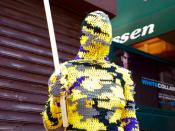
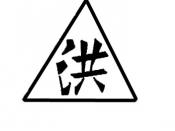
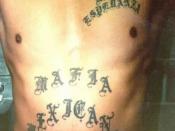
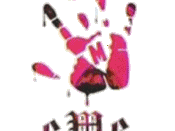
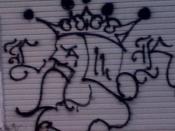

Good Latin gang essay
it was a good essay if you only want to know about latin gangs but the title is history of GANGS in america and not history of latin gangs so there should have been more about some other gangs too. But if someone was just researching latin games this would be the perfect essay for them.
3 out of 3 people found this comment useful.